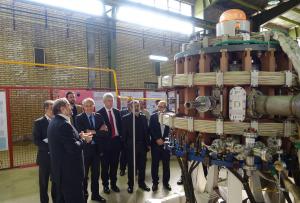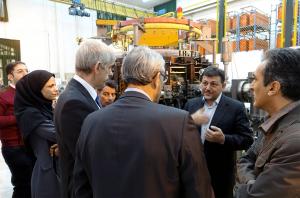ITER team visits Iran
On 4-7 November, Director-General Bigot led a small ITER team to the Islamic Republic of Iran. The visit, conducted in response to Iran's formal request to be considered for participation in the ITER Project as an "Associate Member," was prepared with the full authorization of the existing ITER Members and was designed to improve ITER's understanding of Iran's fusion-related programs and related capacities.
The agenda was densely packed. The ITER team visited each of Iran's small tokamak facilities and associated laboratories — at the Plasma Physics Research Center of Islamic Azad University, at the Atomic Energy Organization of Iran (AEOI), and at Amirkabir University of Technology — as well as a fifth small tokamak under construction. Particular attention was given to Iran's work on tokamak diagnostics, as a possible area of future collaboration.
In many ways this was a historic moment. The ITER Agreement is open to any country that has the scientific, technological and financial commitment to contribute meaningfully to the project, towards the peaceful use of fusion technology in compliance with the Agreement. But such occasions have so far been rare in ITER's history.



